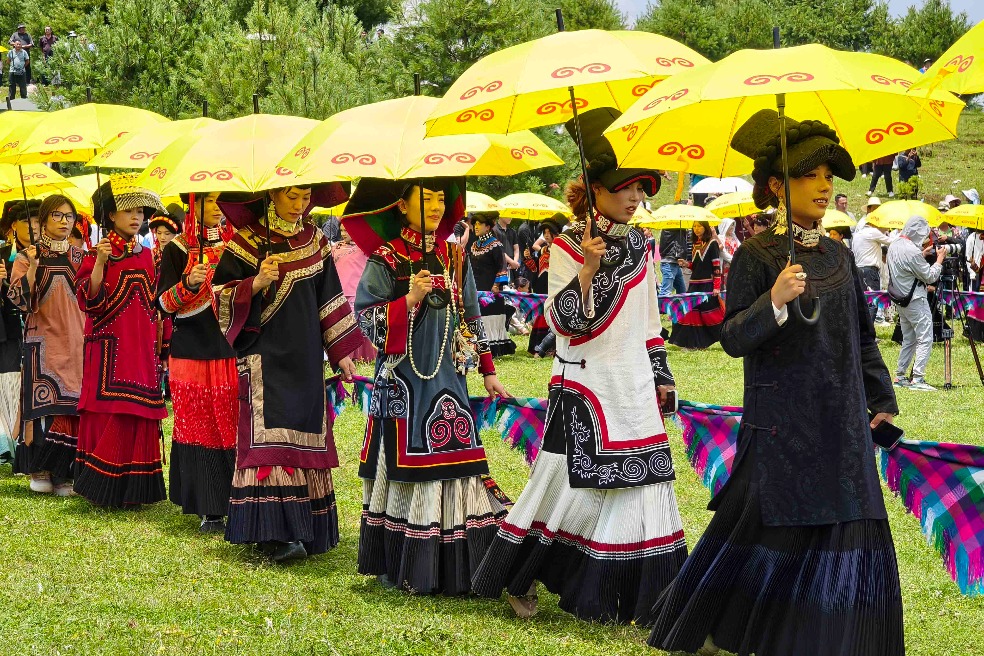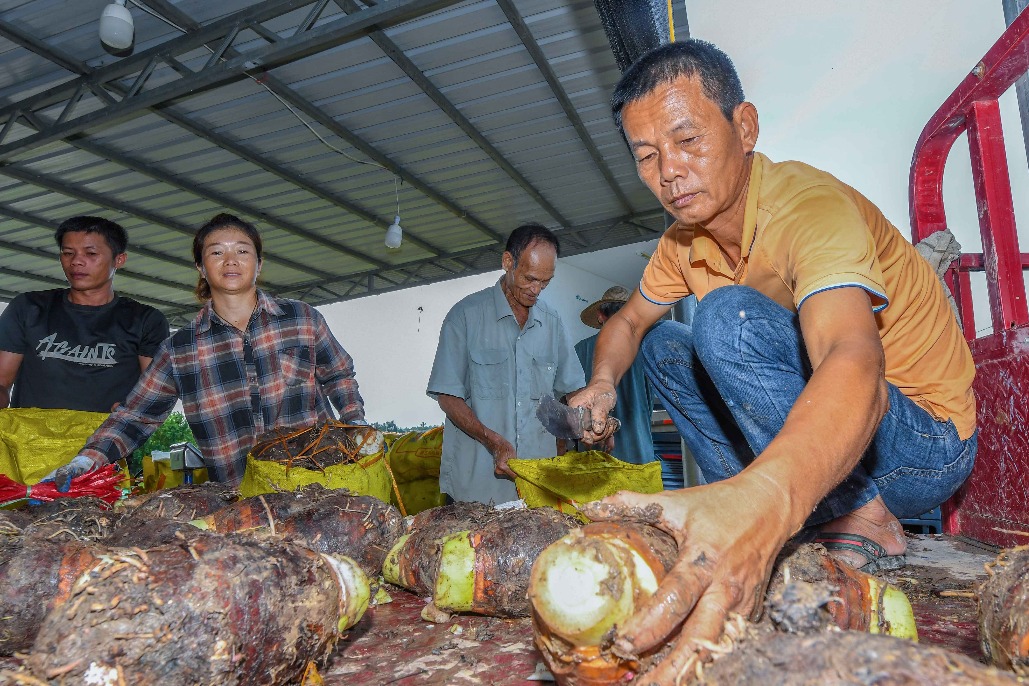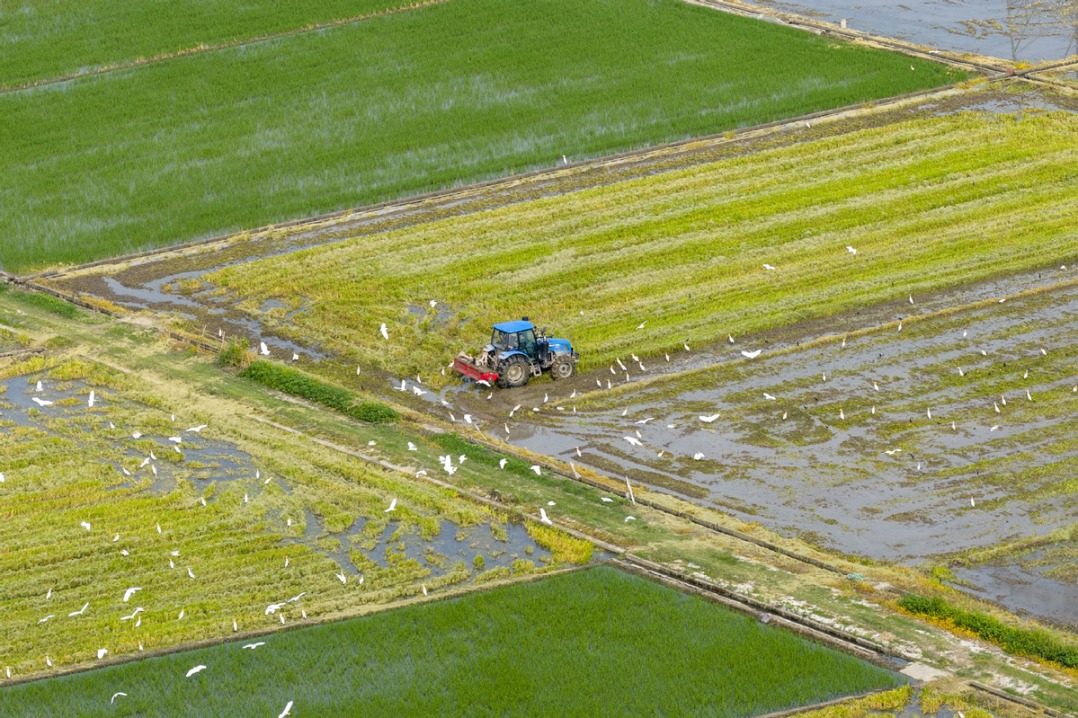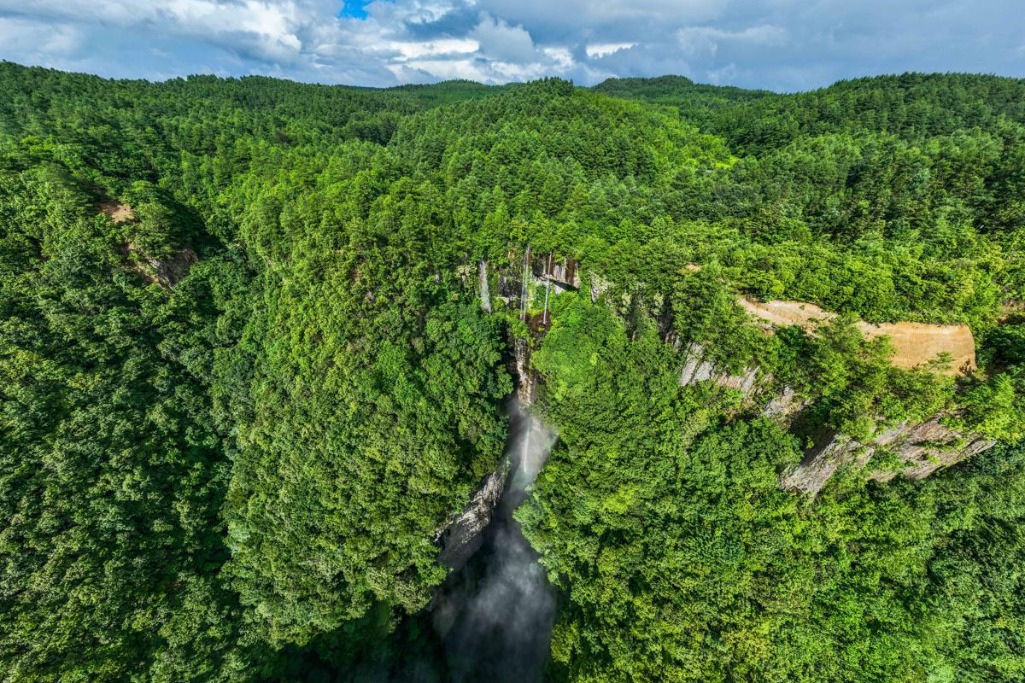Scientists to test medicine for bone loss on Tianzhou-1
Share - WeChat

BEIJING - Scientists will test a medicine to treat bone loss during the maiden voyage of China's first cargo spacecraft Tianzhou-1. The medicine has been specially developed for astronauts, but they hope it will benefit ordinary people too.
The main mission of Tianzhou-1 launched on Thursday is to test propellant refueling technology, which is crucial for the construction and operation of China's planned space station. But each voyage is a precious opportunity to conduct space experiments.
Chinese scientists will use the micro-gravity environment to test the effect of 3-hydroxybutyric acid (3HB) in preventing osteoporosis, said research leader Chen Guoqiang ,who is also director of the Center for Synthetic and Systems Biology at Tsinghua University.
Normally, the solid structure of bone tissue is stimulated and maintained by gravity and physical exercise. But the micro-gravity environment in space eases the load on bones, causing rapid bone loss and osteoporosis, Chen said.
"One day of bone loss in space is equivalent to a year on earth," he said.
Research shows astronauts suffer average monthly bone loss of 0.5 percent to 2 percent in space, especially in weight-bearing bones such as the tibia, femur and vertebrae.
Back on earth, they can take double or triple the time of their flight period to recover. Sometimes bone loss is permanent.
Micro-gravity mainly inhibits the differentiation of osteoblasts (bone-forming cells), which is accompanied by the mass growth of osteoclasts (bone-resorbing cells), causing bone structure to change, said Chen.
Standard drug treatments for osteoporosis have a range of side effects, including tumors or cardiovascular diseases. The medicines are also relatively ineffective for treating osteoporosis caused by micro-gravity.
Chen said 3HB is one of the main components of ketone bodies, which occur naturally in mammals. It had been used to treat epilepsy for many years.
"We found that 3HB can promote bone formation," said Chen.
In an experiment simulating the micro-gravity environment, the effect was obvious.
Unlike the chemical synthetic 3HB for treating epilepsy, Chen's team use microbial fermentation to produce 3HB, which has entirely the same structure as the 3HB naturally existing in the human body. So it's safer than chemical synthetic drugs, Chen said.
Experiments simulating the micro-gravity environment have been conducted on the ground. Scientists hung up mice by their hind legs, and found that those given 3HB had normal bones, while those without suffered serious bone loss.
"We hope to test the effect of the medicine in a real space micro-gravity environment," Chen said.
Since Tianzhou-1 cannot carry animals, scientists will compare the osteoblast cell samples treated and not treated with 3HB. Microscope images of the samples will be transmitted to earth.
Although China has conducted many experiments on the Shenzhou series spacecraft and the Tiangong-1 and Tiangong-2 space labs, opportunities for space experiments are still rare.
"After more than a decade of research we have one chance to conduct an experiment in space. We cherish the chance. We hope Chinese scientists will have more opportunities to conduct experiments in China's space station in future," Chen said.
Scientists believe the science and technologies developed in space exploration can benefit ordinary people. For instance, modern baby diapers were originally developed for astronauts on extended space walks. And the intensive care unit (ICU) system was first developed to monitor astronauts preparing to go to the moon in the 1970s.
The medicine for treating bone loss could also be used by ordinary people.
Osteoporosis is the seventh most common disease in the world. Each year it causes 8.9 million cases of fractures worldwide.
China has 90 million osteoporosis sufferers. The morbidity of osteoporosis among Chinese over 60 years old is 56 percent, while the rate among postmenopausal women is between 60 percent and 70 percent.
With China's aging population, osteoporosis cases will continue to rise. Experts estimate the number of patients in China will reach 200 million in 2050, accounting for 13.2 percent of the total population.
"We hope to solve this global problem," Chen said.
The main mission of Tianzhou-1 launched on Thursday is to test propellant refueling technology, which is crucial for the construction and operation of China's planned space station. But each voyage is a precious opportunity to conduct space experiments.
Chinese scientists will use the micro-gravity environment to test the effect of 3-hydroxybutyric acid (3HB) in preventing osteoporosis, said research leader Chen Guoqiang ,who is also director of the Center for Synthetic and Systems Biology at Tsinghua University.
Normally, the solid structure of bone tissue is stimulated and maintained by gravity and physical exercise. But the micro-gravity environment in space eases the load on bones, causing rapid bone loss and osteoporosis, Chen said.
"One day of bone loss in space is equivalent to a year on earth," he said.
Research shows astronauts suffer average monthly bone loss of 0.5 percent to 2 percent in space, especially in weight-bearing bones such as the tibia, femur and vertebrae.
Back on earth, they can take double or triple the time of their flight period to recover. Sometimes bone loss is permanent.
Micro-gravity mainly inhibits the differentiation of osteoblasts (bone-forming cells), which is accompanied by the mass growth of osteoclasts (bone-resorbing cells), causing bone structure to change, said Chen.
Standard drug treatments for osteoporosis have a range of side effects, including tumors or cardiovascular diseases. The medicines are also relatively ineffective for treating osteoporosis caused by micro-gravity.
Chen said 3HB is one of the main components of ketone bodies, which occur naturally in mammals. It had been used to treat epilepsy for many years.
"We found that 3HB can promote bone formation," said Chen.
In an experiment simulating the micro-gravity environment, the effect was obvious.
Unlike the chemical synthetic 3HB for treating epilepsy, Chen's team use microbial fermentation to produce 3HB, which has entirely the same structure as the 3HB naturally existing in the human body. So it's safer than chemical synthetic drugs, Chen said.
Experiments simulating the micro-gravity environment have been conducted on the ground. Scientists hung up mice by their hind legs, and found that those given 3HB had normal bones, while those without suffered serious bone loss.
"We hope to test the effect of the medicine in a real space micro-gravity environment," Chen said.
Since Tianzhou-1 cannot carry animals, scientists will compare the osteoblast cell samples treated and not treated with 3HB. Microscope images of the samples will be transmitted to earth.
Although China has conducted many experiments on the Shenzhou series spacecraft and the Tiangong-1 and Tiangong-2 space labs, opportunities for space experiments are still rare.
"After more than a decade of research we have one chance to conduct an experiment in space. We cherish the chance. We hope Chinese scientists will have more opportunities to conduct experiments in China's space station in future," Chen said.
Scientists believe the science and technologies developed in space exploration can benefit ordinary people. For instance, modern baby diapers were originally developed for astronauts on extended space walks. And the intensive care unit (ICU) system was first developed to monitor astronauts preparing to go to the moon in the 1970s.
The medicine for treating bone loss could also be used by ordinary people.
Osteoporosis is the seventh most common disease in the world. Each year it causes 8.9 million cases of fractures worldwide.
China has 90 million osteoporosis sufferers. The morbidity of osteoporosis among Chinese over 60 years old is 56 percent, while the rate among postmenopausal women is between 60 percent and 70 percent.
With China's aging population, osteoporosis cases will continue to rise. Experts estimate the number of patients in China will reach 200 million in 2050, accounting for 13.2 percent of the total population.
"We hope to solve this global problem," Chen said.




































